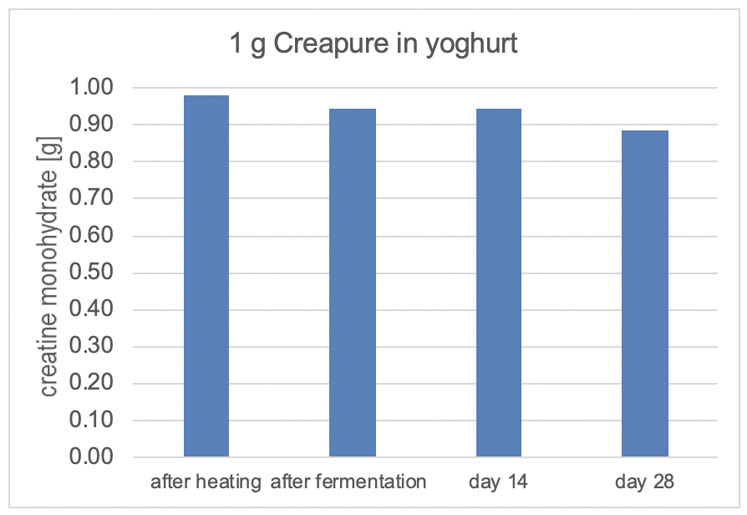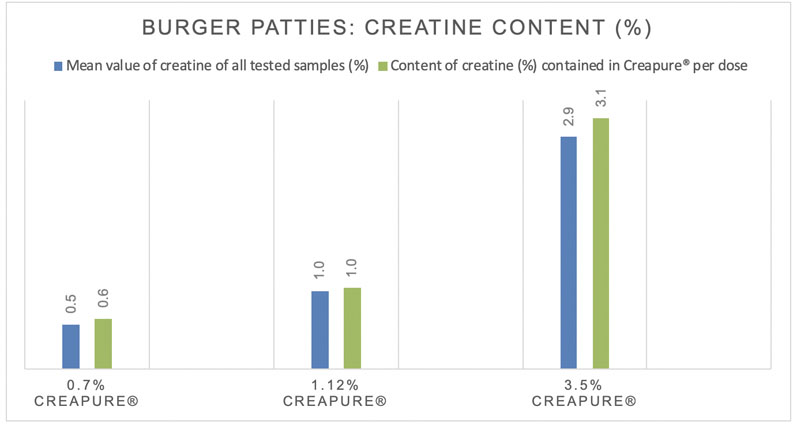Plant-based products enriched with creatine monohydrate provide an ideal solution, improving the nutrient profile of end products and helping consumers to live a healthy and sustainable life.
In the context of our future food system, in which sustainability, animal welfare and environmental protection are gaining in importance, individual nutrition and lifestyles are also becoming increasingly relevant.
The numbers of vegetarians, vegans and flexitarians (people who still consume meat and dairy but less frequently) are increasing every year. This trend has led to a rising consumption of plant-based food and a growing demand for plant-based alternatives.1
To achieve a reduced carbon footprint and a well-balanced diet, more and more consumers are looking for plant-based alternatives and creatine-enriched functional foods.
Creatine monohydrate is the best source of creatine for the body. It’s a widely used dietary supplement that has been extensively studied for its effects on physical and mental performance. As an innovative ingredient, it adds value to a wide range of alternative plant-based products.
Creatine: a natural energy source
Creatine is a natural substance found in the human body. It’s essential for life as it plays a vital role in storing and transporting energy within each of the body’s trillions of cells — including skeletal muscles, the heart, brain and other organs, as well as immune cells.
The body of an average adult typically contains 80–140 g of creatine (phosphorylcreatine and free creatine), with about 95% of it being in the muscle and brain (where huge amounts of energy are needed).2,3
A sufficiently high level of creatine storage in muscle cells increases both their performance and endurance. The same applies to our brain, which requires about 20% of the body’s total energy consumption.3–5 Furthermore, creatine is required for the proper function of the immune system.6
Creatine: demand and sources
In the body, 2–3 g of creatine is broken down and excreted daily. To remain healthy, this needs to be replenished either directly through food (meat and fish) or by cellular synthesis using the amino acids glycine, arginine and methionine that, in turn, are derived from food.
Vegans need to synthesise all of their daily creatine requirements as most as plant-sourced foods contain no creatine (Table I) and lower levels of glycine, arginine and, especially, methionine compared with animal-sourced products. Endogenous creatine synthesis requires nearly 40% of an average person’s daily methionine intake.7

Table I: Creatine content in food (content in mg/g wet weight of food)
Individuals with low or no creatine intake, particularly vegans and vegetarians, have lower creatine levels compared with non-vegetarians.8 As, such, the dietary intake of creatine is essential to support the metabolism of these individuals.

Figure 1: Stability of Creapure in low-fat yoghurt: 1 g of Creapure (creatine monohydrate) was incorporated into yoghurt (0.1% fat), heated at 96 °C for 5 minutes, fermented at 37 °C for 15 hours and stored at 4 °C for 28 days
Creatine: benefits in plant-based products
Creatine monohydrate is a functional ingredient that can be added to many products, such as bars, cereals, dairy products (yoghurts or whey drinks,) dairy alternatives and meat substitutes.
For example, creatine monohydrate is stable in yoghurt (Figure 1) and meat substitutes (Figure 2). The results of the stability tests show that different heating temperatures and storage times lead to very little loss of creatine, and that Creapure is stable and qualified for the use in meat alternatives.
Creatine monohydrate optimises the nutritional profile of products and makes plant-based alternatives as natural (when it comes to composition) as animal-based products. Products enriched with creatine monohydrate offer vegans and vegetarians an ideal creatine supply.

Figure 2: Stability of Creapure in meat substitutes: 0.7, 1.12 and 3.5 g of Creapure (creatine monohydrate) was incorporated into a dough based on plant-based protein at three different dosages (equivalent to 0.6, 1.0 and 3.0 g of creatine); preparation included two heating steps (pre-frying and oven cooking with steam) following by freezing for storage
Creapure: pure creatine monohydrate made in Germany
When selecting creatine monohydrate for food production, the highest quality and purity are a prerequisite. Creapure is the gold standard; it’s pure, safe and manufactured according to the strict standards of the German pharmaceutical and food industries.
The production of Creapure is GMP compliant, follows HACCP principles and is IFS Food certified, a quality standard recognised by the Global Food Safety Initiative.
Raw materials used for Creapure production are not of animal origin, making Creapure vegetarian and vegan friendly. Creapure is an excellent ingredient, providing support for a healthy, active life and general well-being — especially for vegans and vegetarians.
References
- https://proveg.com/what-we-do/corporate-engagement/proveg-consumer-survey-report-download.
- A. Casey and P.L. Greenhaff, “Does Dietary Creatine Supplementation Play a Role in Skeletal Muscle Metabolism and Performance?” Am. J. Clin. Nutr. 72(2), 607S–617S (2000).
- M. Balestrino and E. Adriano, “Efficacy and Safety of Creatine Supplementation in Pathological or Paraphysiological Conditions of Brain and Muscle,” Med. Res. Rev. 39(6), 2427–2459 (2019).
- E. Dolan, B. Gualano and E.S. Rawson, “Beyond Muscle: The Effects of Creatine Supplementation on Brain Creatine, Cognitive Processing and Traumatic Brain Injury,” Eur. J. Sport Sci. 1, 1–14 (2019).
- R. Shulman, et al., “Energetic Basis of Brain Activity: Implications for Neuroimaging,” Trends Neurosci. 27(8), 489–495 (2004).
- L. Kazak and P. Cohen, “Creatine Metabolism: Energy Homeostasis, Immunity and Cancer Biology,” Nature Reviews Endocrinology 16, 421–436 (2020).
- T. Brosnan, R.P. da Silva and M.E. Brosnan, “The Metabolic Burden of Creatine Synthesis,” Amino Acids 40,1325–1331 (2011).
- M. Kaviani, K. Shaw and P.D. Chilibeck, “Benefits of Creatine Supplementation for Vegetarians Compared to Omnivorous Athletes: A Systematic Review,” Int. J. Environ. Res. Public Health 17, 3041 (2020).




